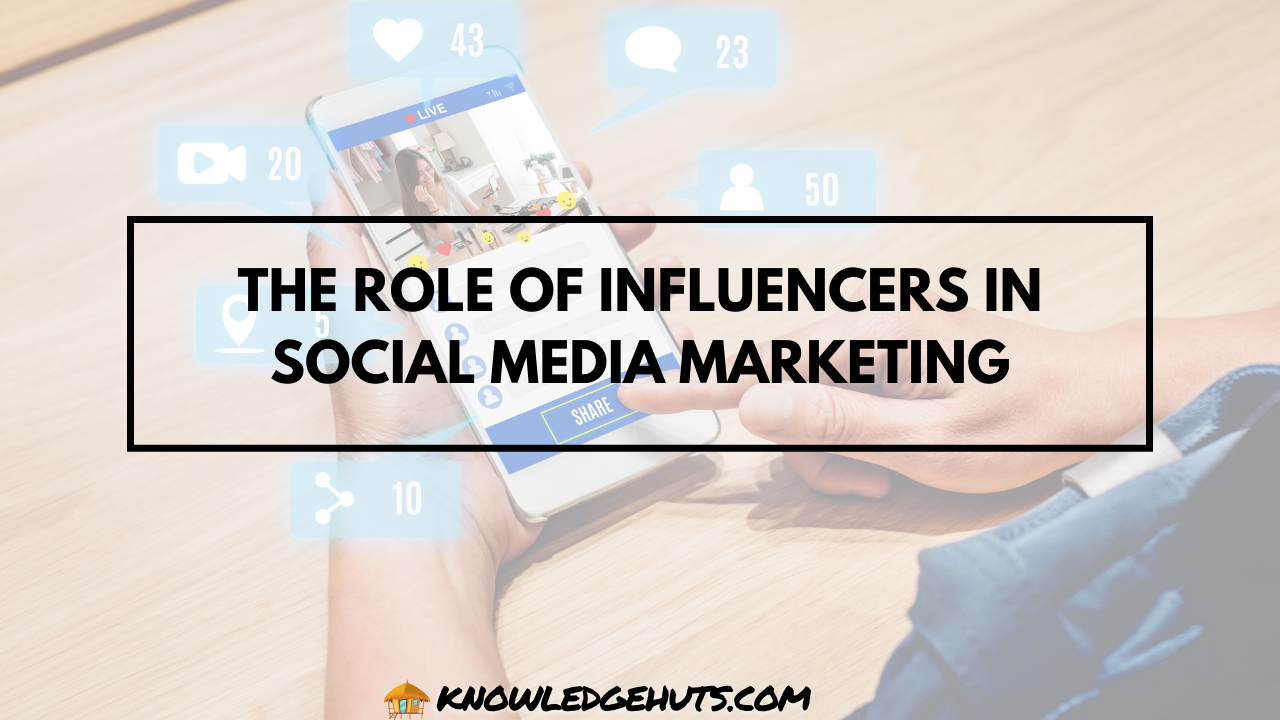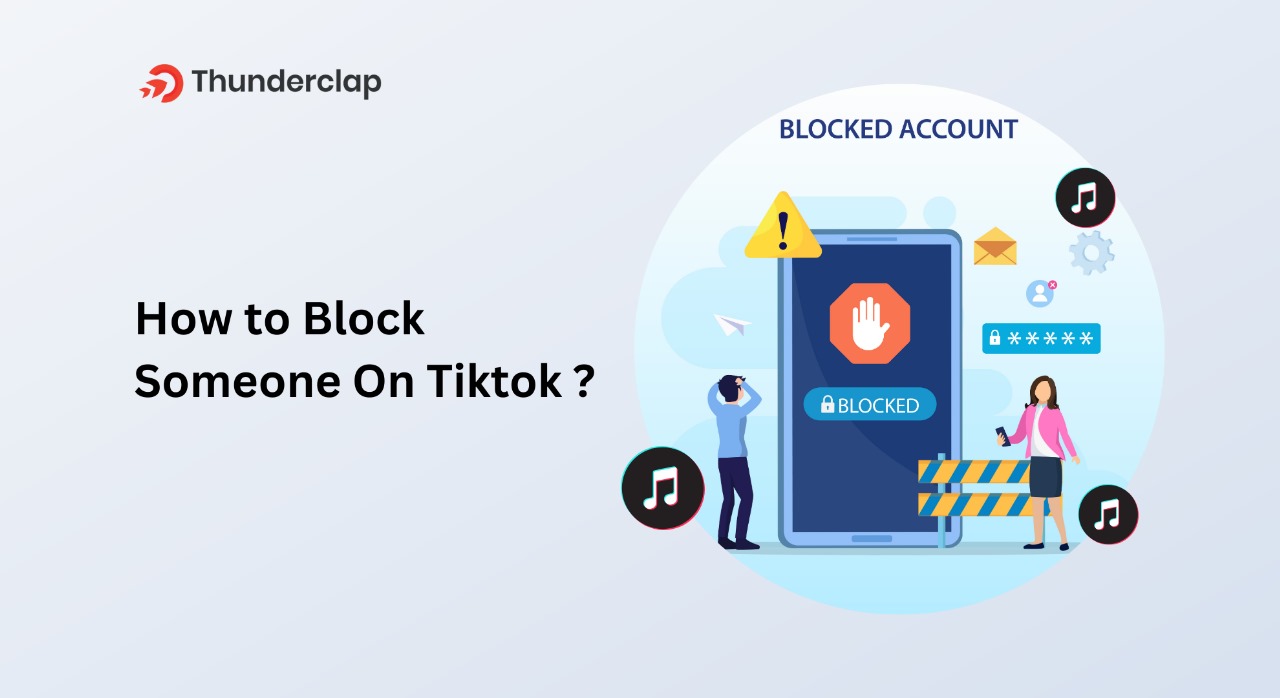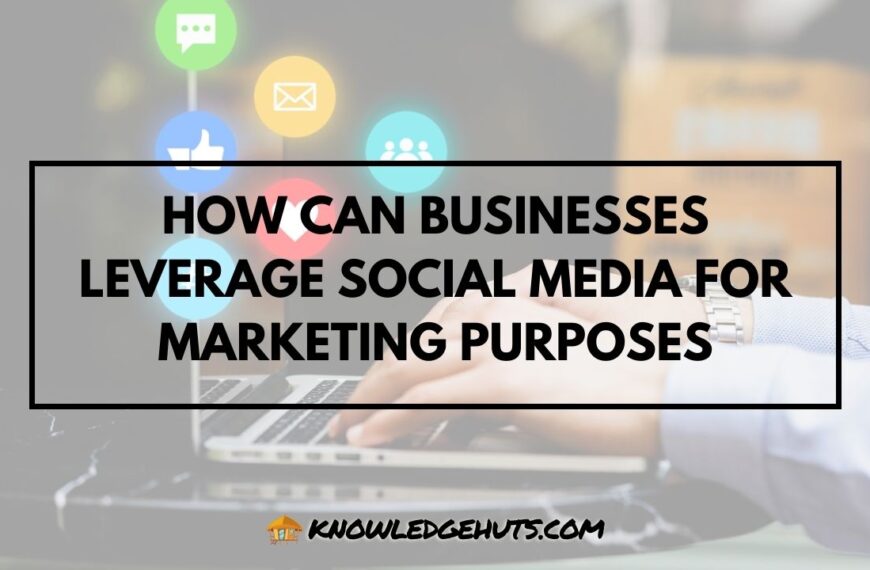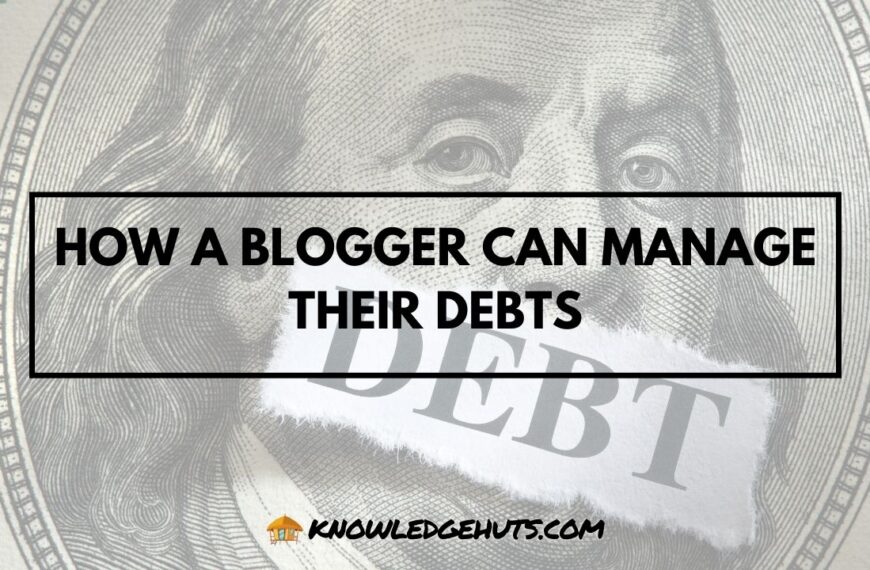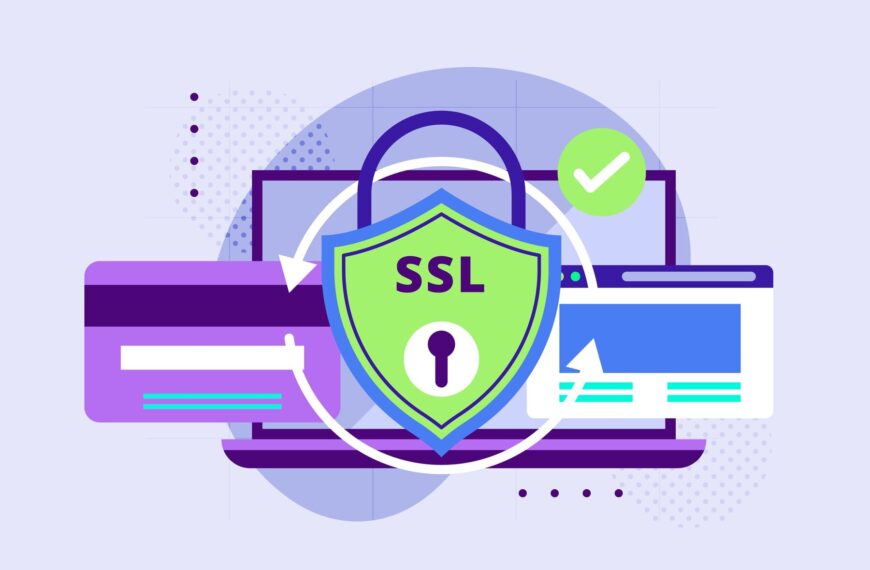Social media has transformed the way businesses connect with their audiences, and one of the most effective tools in this digital landscape is influencer marketing. Influencers, who are individuals with large and engaged followings on social media platforms, play a significant role in shaping consumer behavior, building brand awareness, and driving sales. By leveraging the reach and credibility of influencers, brands can engage with their target audiences in authentic and meaningful ways.
This blog post will explore the role of influencers in social media marketing, how they impact consumer behavior, and the best strategies for leveraging influencer marketing to boost brand visibility. We will also provide real-world examples, key statistics, and actionable insights on how to effectively integrate influencers into your social media marketing strategy.
What is Influencer Marketing?
Influencer marketing is a form of social media marketing where brands collaborate with influencers—people who have established credibility and large followings on platforms like Instagram, YouTube, TikTok, Twitter, and Facebook. Influencers use their platforms to promote products, services, or brand messages in an authentic and engaging way, making it more relatable for their followers.
Types of Influencers
There are different categories of influencers, each with its own benefits for brands:
- Mega-Influencers: Typically celebrities with millions of followers, mega-influencers offer massive reach but may have lower engagement rates.
- Macro-Influencers: With between 100,000 and 1 million followers, macro-influencers are well-known figures in their niches and provide a balance between reach and engagement.
- Micro-Influencers: Micro-influencers have smaller followings (10,000–100,000) but higher engagement rates. They are often seen as experts in specific areas and are trusted by their communities.
- Nano-Influencers: With fewer than 10,000 followers, nano-influencers have tight-knit, highly engaged audiences. They are ideal for hyper-local or niche campaigns.
Quote: “Influencer marketing isn’t just about numbers; it’s about finding the right voice to authentically connect with your audience.” — Sarah Thompson, Social Media Strategist
Example Table: Types of Influencers and Their Benefits
| Influencer Type | Follower Count | Key Benefit |
|---|---|---|
| Mega-Influencers | 1M+ followers | Massive reach, broad audience appeal |
| Macro-Influencers | 100K–1M followers | High reach, niche-specific authority |
| Micro-Influencers | 10K–100K followers | High engagement, trusted voice in niche |
| Nano-Influencers | <10K followers | Authentic relationships, targeted audience |
The Growing Importance of Influencers in Social Media Marketing
As consumers increasingly rely on social media for information, entertainment, and product recommendations, influencers have become powerful intermediaries between brands and their audiences. According to a 2023 survey, over 67% of marketers reported that they planned to increase their influencer marketing budgets, with many citing higher ROI from these campaigns compared to traditional advertising.
Why Influencers Matter in Social Media Marketing
- Authenticity and Trust: Consumers trust influencers because they provide authentic, relatable content. Unlike traditional advertisements, influencer endorsements feel more organic, as influencers often share personal experiences with the products they promote.
- Targeted Reach: Influencers have already built specific audiences, making it easier for brands to reach their ideal customers without extensive targeting. Whether a brand is looking for fashion enthusiasts, fitness buffs, or tech geeks, influencers offer a direct line to those communities.
- Higher Engagement: Influencers often have better engagement rates than brands’ own social media accounts. This is because followers perceive influencers as real people with genuine opinions rather than corporate entities. As a result, their posts generate more likes, comments, shares, and discussions.
- Content Creation: Influencers are not just marketers; they are content creators. By working with influencers, brands can leverage their creativity and storytelling abilities to craft compelling narratives around their products or services.
- Social Proof: When influencers endorse a brand, it acts as social proof. Consumers are more likely to trust a product or service if they see someone they admire using it.
Example Table: Reasons Influencers Matter in Social Media Marketing
| Reason | Description | Impact on Campaign Success |
|---|---|---|
| Authenticity and Trust | Influencers provide genuine recommendations | Increases consumer trust, improves conversions |
| Targeted Reach | Influencers have established audiences in niches | Reaches the right audience, boosts relevancy |
| Higher Engagement | Followers engage more with influencer content | Improves post interactions, increases visibility |
| Content Creation | Influencers produce creative, relatable content | Enhances brand storytelling, creates shareable content |
| Social Proof | Influencer endorsements validate brand credibility | Builds trust, drives purchase decisions |
How Influencers Impact Consumer Behavior
Influencers have the ability to shape consumer opinions, behaviors, and purchasing decisions. By showcasing products in their daily lives or creating in-depth reviews, influencers help bridge the gap between brands and potential customers. Research shows that 49% of consumers rely on influencer recommendations before making a purchase, which underscores the significant role they play in modern consumer decision-making.
Key Ways Influencers Shape Consumer Behavior
- Personal Recommendations: Influencers are seen as trusted individuals, so their endorsements are often perceived as personal recommendations rather than paid advertisements. This leads to a stronger influence on purchasing decisions.
- Creating Trends: Influencers are often at the forefront of new trends, especially in industries like fashion, beauty, fitness, and technology. Their ability to introduce products or lifestyle choices can have a ripple effect, inspiring their followers to adopt similar behaviors.
- FOMO (Fear of Missing Out): Influencers create a sense of urgency around products through limited-time promotions, giveaways, or exclusive offers. This fear of missing out can drive immediate action from consumers.
- Relatable Content: Unlike traditional advertisements, influencer content feels more relatable and personalized. Whether it’s a makeup tutorial, a fitness journey, or a home decor recommendation, followers feel a deeper connection to the product because it’s presented in an authentic and natural way.
Quote: “Influencers have an unparalleled ability to create trends and build trust. Their personal connection with their audience makes them key drivers of consumer behavior.” — Mark Lewis, Marketing Expert
Example Table: How Influencers Shape Consumer Behavior
| Behavior Influence | Description | Effect on Consumer Decisions |
|---|---|---|
| Personal Recommendations | Influencer endorsements feel like personal advice | Increases likelihood of purchase |
| Creating Trends | Influencers introduce new products or ideas | Drives adoption of new trends |
| FOMO | Limited offers and promotions create urgency | Encourages immediate action |
| Relatable Content | Influencers showcase products in real-life settings | Builds stronger emotional connection |
Best Practices for Influencer Marketing Campaigns
For brands looking to leverage influencers in their social media marketing strategy, it’s important to approach influencer marketing strategically. Here are some best practices for building successful influencer partnerships.
1. Define Clear Campaign Goals
Before reaching out to influencers, brands need to establish clear goals for the campaign. Whether it’s increasing brand awareness, driving website traffic, or boosting sales, having specific objectives helps shape the campaign’s direction and measure success.
Key Campaign Goals:
- Brand Awareness: If the goal is to increase visibility, focus on influencers with large followings.
- Engagement: To encourage interaction, collaborate with influencers who have high engagement rates.
- Conversions: For driving sales, work with influencers whose followers are likely to be interested in purchasing your products.
2. Choose the Right Influencers
Selecting the right influencers is crucial to campaign success. Look for influencers whose audience aligns with your target demographic and whose values match your brand. Micro-influencers with smaller, highly engaged audiences may be more effective for niche products, while macro-influencers are ideal for broader campaigns.
Criteria for Selecting Influencers:
- Audience Alignment: Ensure the influencer’s followers match your target market.
- Engagement Rate: Look for influencers who have a high level of interaction with their followers.
- Authenticity: Choose influencers who create genuine, relatable content rather than overly polished advertisements.
3. Develop Authentic Collaborations
Successful influencer campaigns are built on authenticity. Allow influencers the creative freedom to showcase your products in their own voice and style. Overly scripted or inauthentic posts can backfire, leading to negative feedback from followers who see through the promotion.
4. Track and Measure Performance
It’s essential to track the performance of influencer campaigns to understand their effectiveness. Use key performance indicators (KPIs) such as engagement rates, reach, conversions, and referral traffic to measure the success of each campaign.
Key Metrics to Track:
- Engagement Rate: The number of likes, comments, and shares on influencer posts.
- Reach: The total number of people exposed to the influencer’s content.
- Conversions: The number of people who take the desired action (e.g., purchasing a product, signing up for a newsletter).
- Referral Traffic: The amount of traffic driven to your website from the influencer’s posts.
5. Build Long-Term Relationships with Influencers
While one-off collaborations can be effective, long-term partnerships between brands and influencers often yield better results. Continuous collaboration allows influencers to develop a deeper connection with your brand, making their endorsements more authentic and trusted by their audience. A long-term relationship also allows for consistent messaging, helping to reinforce your brand’s identity.
Benefits of Long-Term Influencer Partnerships:
- Stronger Brand Advocacy: Influencers who continuously work with your brand become genuine advocates, which increases the authenticity of their endorsements.
- Consistent Messaging: Repeated exposure to influencer content strengthens brand recognition and trust among followers.
- Better Results Over Time: As the influencer’s followers become more familiar with your brand, they are more likely to engage with it and take action.
6. Use User-Generated Content
Influencers often inspire their followers to create and share their own content featuring your brand. Encouraging user-generated content (UGC) can amplify your campaign’s reach and impact, as customers share their experiences with your products or services. This type of content serves as additional social proof and can be used in future marketing efforts.
How to Leverage UGC:
- Hashtag Campaigns: Create a branded hashtag and encourage both influencers and their followers to use it when posting about your product. This helps increase visibility and engagement.
- Reposting: Share user-generated content on your own social media channels to highlight real customer experiences and further build trust.
- Competitions: Run contests or giveaways that require followers to submit UGC as an entry, driving engagement and excitement around your brand.
Example Table: Benefits of User-Generated Content in Influencer Campaigns
| Benefit | Description | Impact on Campaign Success |
|---|---|---|
| Social Proof | Followers see real customers using your product | Builds trust and credibility |
| Increased Engagement | UGC encourages followers to interact with your brand | Boosts visibility and interaction |
| Authentic Content | UGC provides genuine, unpolished content | Enhances brand authenticity |
| Cost-Effective Marketing | UGC reduces the need for expensive content creation | Lowers marketing costs, increases reach |
7. Disclose Partnerships Transparently
Transparency in influencer marketing is critical. Influencers must disclose paid partnerships with brands to maintain trust with their audience and comply with legal guidelines such as the Federal Trade Commission (FTC) regulations. Clearly labeled sponsored posts ensure that followers are aware of the influencer-brand relationship, which helps preserve authenticity.
Best Practices for Disclosing Influencer Partnerships:
- Use Clear Language: Influencers should use phrases like “#ad” or “#sponsored” to make it clear that a post is part of a paid partnership.
- Follow Platform Guidelines: Each social media platform has its own disclosure policies, and influencers should adhere to these to ensure compliance.
- Maintain Authenticity: Even in sponsored content, influencers should ensure that their endorsements align with their personal style and values, keeping their audience’s trust intact.
Quote: “Transparency is key to successful influencer marketing. Followers value authenticity, and clear disclosures help maintain that trust.” — Emma Davis, Digital Marketing Expert
8. Evaluate Campaign Success and Learn
After an influencer campaign concludes, it’s important to evaluate its success and learn from the results. By reviewing key metrics and analyzing what worked well and what didn’t, you can refine your future campaigns and maximize their effectiveness. Post-campaign reports help identify the ROI and the overall impact of influencer partnerships on brand awareness and conversions.
Steps to Evaluate Influencer Campaigns:
- Analyze KPIs: Review metrics such as engagement, conversions, reach, and referral traffic to gauge the success of the campaign.
- Gather Feedback from Influencers: Ask influencers for feedback on the collaboration process. This can help improve future campaigns and foster better relationships.
- Identify Improvements: Use the data to identify areas for improvement, such as better influencer selection or adjustments in messaging.
Example Table: Steps to Evaluate Influencer Marketing Campaigns
| Step | Description | Benefit to Future Campaigns |
|---|---|---|
| Analyze KPIs | Review metrics like engagement, reach, and sales | Identifies success and areas for improvement |
| Gather Influencer Feedback | Ask influencers for insights on the partnership | Strengthens relationships, improves processes |
| Identify Areas for Improvement | Use data to refine future campaigns | Enhances effectiveness, increases ROI |
Real-World Examples of Influencer Marketing Success
Influencer marketing has proven to be an effective strategy for many brands across various industries. Below are a few real-world examples of successful influencer campaigns.
1. Daniel Wellington
Overview: Daniel Wellington, a Swedish watch company, became a global success by leveraging influencer marketing on Instagram. The brand partnered with micro-influencers and macro-influencers to showcase their stylish watches in everyday settings.
Key Success Factors:
- Strategic Partnerships: Daniel Wellington focused on partnering with influencers whose aesthetics aligned with the brand’s minimalist style.
- Promo Codes and Hashtags: Influencers shared unique promo codes, encouraging their followers to make purchases while using branded hashtags, which amplified the campaign’s reach.
Result: Daniel Wellington’s influencer strategy helped the brand grow its social media following and increase global sales, turning it into one of the fastest-growing watch companies.
2. Glossier
Overview: Beauty brand Glossier has built a strong community by working with everyday influencers, particularly micro- and nano-influencers. The brand’s influencer strategy focuses on relatable, user-generated content, making Glossier products feel accessible and authentic.
Key Success Factors:
- Community-Driven Marketing: Glossier encourages its customers, not just influencers, to share their experiences with its products.
- Authentic Content: Glossier emphasizes authenticity, allowing influencers to showcase the products in their daily lives without overproduced content.
Result: Glossier’s influencer marketing has led to massive growth, with its community-driven approach helping the brand become a cult favorite in the beauty industry.
3. Gymshark
Overview: Fitness brand Gymshark partnered with fitness influencers to promote its products through social media platforms like Instagram and YouTube. By aligning with fitness influencers who embodied the brand’s values, Gymshark was able to tap into a highly engaged audience.
Key Success Factors:
- Fitness Influencers: Gymshark carefully selected fitness influencers who had loyal followings and whose lifestyles matched the brand’s image.
- Exclusive Drops: Gymshark influencers promoted limited-edition releases, creating excitement and urgency around the products.
Result: Gymshark’s influencer marketing strategy contributed to the brand’s rapid growth, turning it into a leading global fitness apparel company.
Conclusion
Influencers have become a crucial part of social media marketing, offering brands a way to connect with their target audience through authentic, relatable content. From mega-influencers with massive reach to micro-influencers with niche authority, influencers can help build trust, drive engagement, and generate sales.
By defining clear goals, selecting the right influencers, fostering authentic partnerships, and measuring success through key metrics, brands can create impactful influencer campaigns that resonate with their audience. As social media continues to evolve, influencer marketing will remain a powerful tool for building brand awareness and fostering customer loyalty.
Quote: “Influencer marketing is about more than just visibility—it’s about trust, engagement, and authentic connections between brands and their audience.” — Mark Johnson, Social Media Marketing Specialist
